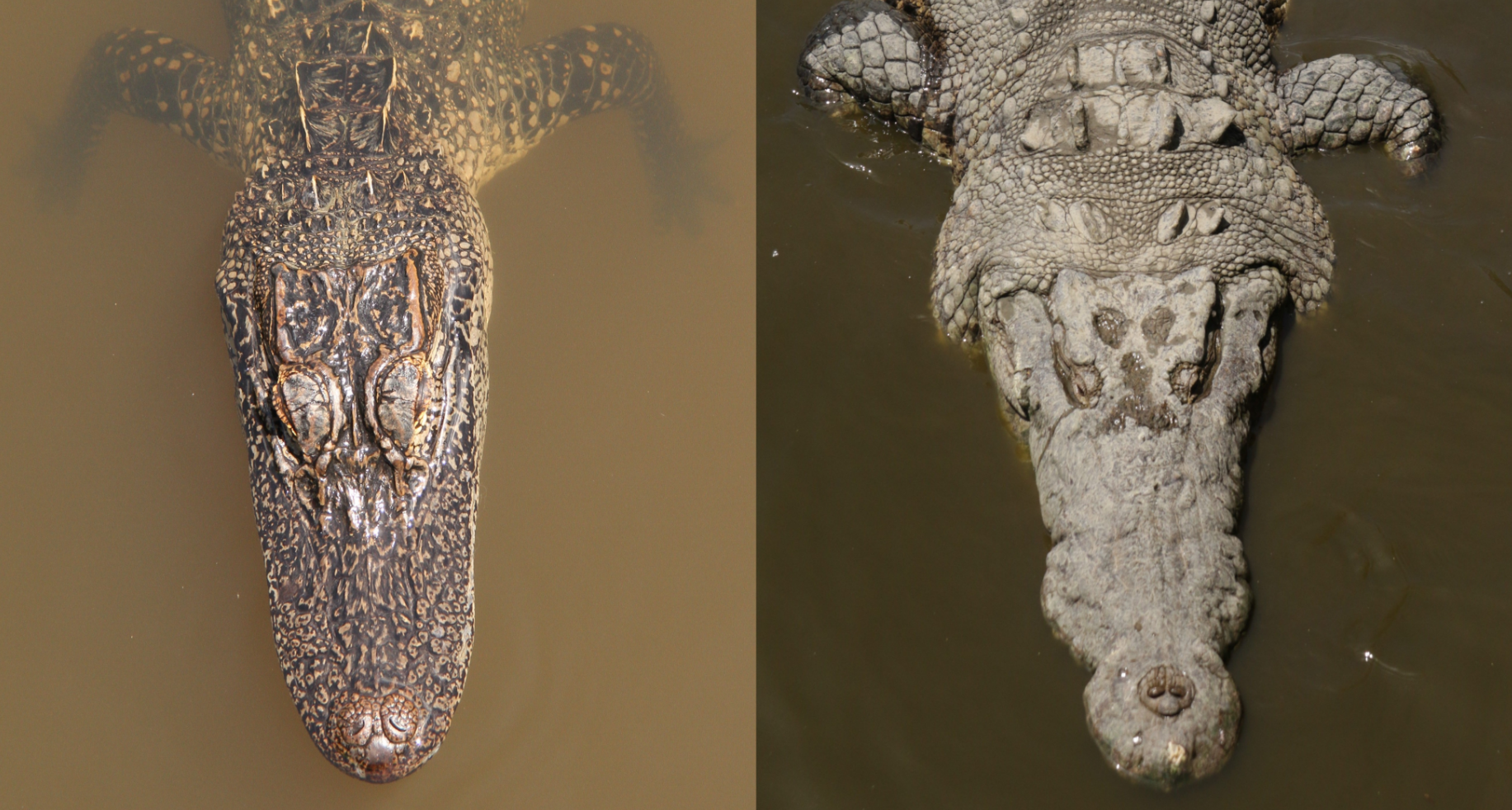Crocodiles vs Alligators vs Caimans vs Gharials
A common question is- how do you tell the difference between a crocodile and an alligator? The answer is not as simple as you may think.
While it is commonly claimed that the main way to tell the difference between an alligator and a crocodile is the snout shape (alligators being U-shaped and crocodiles being V-shaped), this is not always the case. Some crocodile species have extremely broad snouts, while some caimans can have nearly V-shaped snouts.

One physical way to differentiate between crocodiles and alligatorids is the distribution of the integumentary sense organs (ISOs). These sensory organs, which are useful for locating prey and more, are found only on the head and jaws in alligatorids, but throughout the entire body of crocodiles (and gharials).

Another difference lies in the jawline- when alligatorids close their jaws, the teeth of the top jaws fit into sockets in the lower jaw, so that only the top teeth are visible when its jaws are closed ("overbite"). When crocodiles and gharials close their jaws, the teeth are "interlocking" so the teeth on both the top and bottom jaws are visible when closed.

